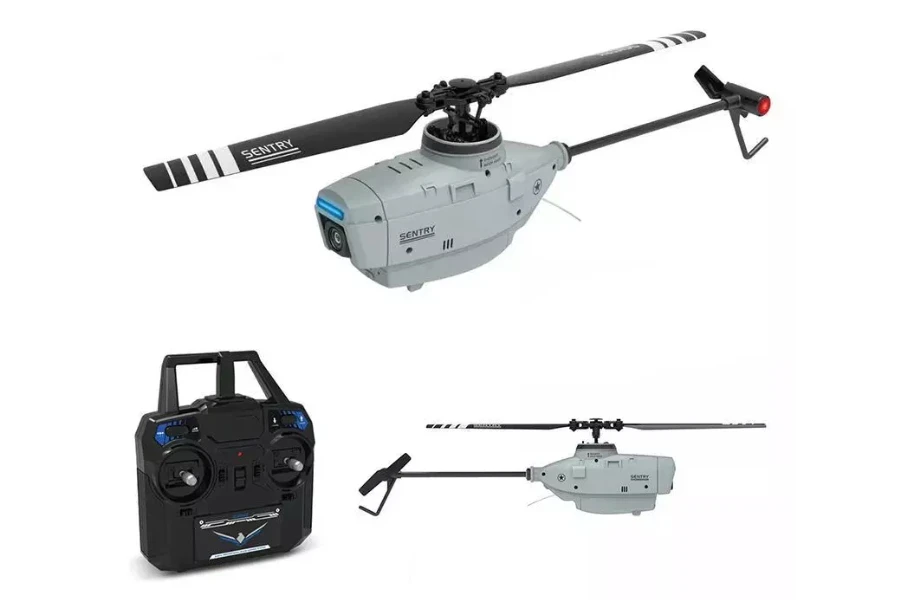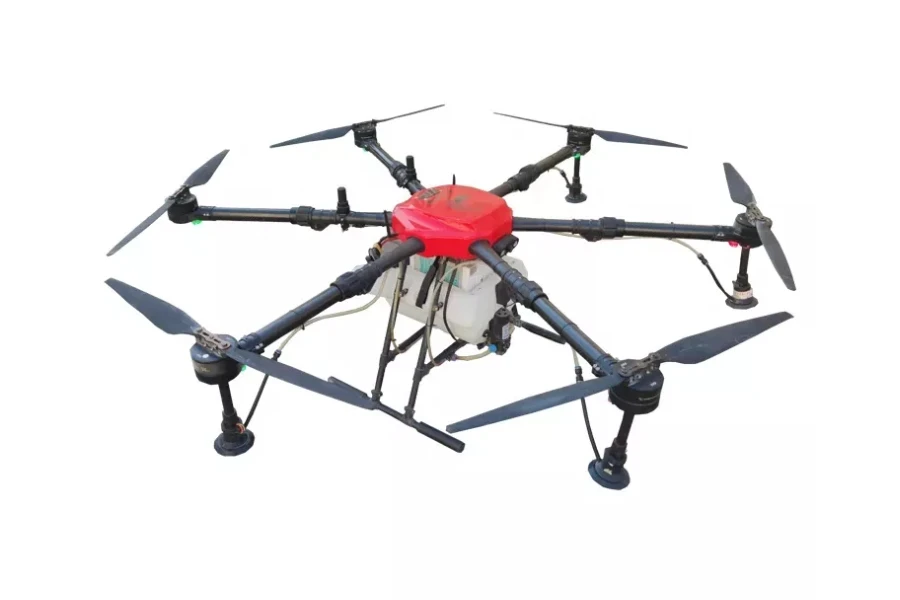Purchasing a beginner drone for your customers can be easy. It’s understandable to feel overwhelmed if you attempt to find the best items for potential customers.
For this reason, this guide will assist you in navigating the drone market by providing tips on selecting the best drone before listing the types of drones available for purchase.
Table of Contents
Overview of drones market size
Tips for selecting beginner drones
Types of drones
Bottom line
Overview of drones market size
The global market size of drones has rapidly grown over the years and is now worth over US$30.6billion, according to a Drone Market Report by DRONEII. They predict that in 2026, the market share will have grown to an estimated US $55.8 billion.
This means that there will be a high demand for drone services in the coming years, and consumers and businesses should expect a significant increase in drone products and service consumption.
Tips for selecting beginner drones
Learn about sensors
Learn about the different sensors of drones and their significance. Some drones have sensors that are not featured in other drone models. For instance, some drones have primary sensors like debris detection, whereas there are those with multispectral sensors that aid in extensive fieldwork.
Knowing the different types of sensors aids in identifying what kind of drone to acquire with the right sensors that fit your potential customer prospects.
Consider drone features
Drones have several features that increase their effectiveness and convenience. By learning more about drone specifications, you may establish yourself as a market leader in beginner drones.
Some features to check before acquiring a drone are as follows;
Material used
Check the drone’s material. Drones comprise aluminum, magnesium, carbon fiber, and plastic on them. At times they are made from alloys of these materials. Drones with alloys offer the advantage of the stronger metal in them and are more affordable than ones with pure metal.
Range of device
Different types of drones come in different ranges. There are those drones that cover longer distances than others. Every drone has its features listed, and the range is equally essential as other features. A drone with long-range distances is great for extended operations or commercial projects. Short-range devices go well with personal photography and video shoots.
Flight time
The total flight duration of a drone is another crucial specification. The average flight time of a consumer drone is anywhere between 10 minutes and 30 minutes, whereas flight time for a more sophisticated drone may last for up to an hour.
Camera
Discover more about the different cameras in drones and their megapixels for better picture quality and detail. Most drones have 13MP, 16MP, and 20MP. A high-megapixel camera is ideal for the highest-quality drone photo shoots.
GPS navigation
Drones have GPS to send information to the controller on their exact location or positioning on earth when on a flight. They rely on satellites to relay information on their longitudinal and latitudinal points.
3-axis gimbal
A 3-axis gimbal is crucial in a drone to provide the best stabilization on videos and images. Not all drones come with this feature.
Availability of spare parts
Drones have many components, such as the frame, propeller blades, cameras, motors, LED lights, and others, that serve different purposes when operated. Find out if the relevant replacement parts for these components are readily available in stores before making a purchase.
Types of drones
Multi-rotor drones
Multi-rotor drones have more than one rotor, hence the name multi-rotor. They come in three rotors, four rotors, six rotors, and eight rotors. They work best for thermal reports, 3D scanning, visual scanning, photography, and videography.
Pros
- They can fly close to buildings and other structures like bridges.
- They are easy to operate.
Cons
- They have limited flight time, range, and speed. Therefore, consumers cannot use them for prolonged tasks or long periods.
- Their battery life is limited by the payload the drone carries. They may last between 20 and 30 minutes.
Fixed-wing drones
Fixed-wing drones have a secure wing mounted to resemble an airplane. In line with their designs, they can move forward without a great deal of force to lift like helicopters. They are applicable for security use, agriculture, construction, inspection, and surveying.
Pros
- They have long ranges and can cover long distances when conducting security surveillance and monitoring wide areas.
- Long battery life is standard in fixed-wing drones. Unlike multirotor drones that last in minutes, they can go for long hours.
Cons
- They require a high level of training to launch and land.
- They are expensive to acquire.
Single-rotor helicopter drones
Single-rotor drones feature a rotor blade that spins and a tail rotor to control direction similar to that of a helicopter. Single-rotor drones can be used for surveys, carrying heavy payloads, and aerial laser scanning.

Pros
- They are more efficient than multirotor blades because it has only one blade spinning and will not require a lot of energy.
- One can swap a single rotor for a larger one for better performance and efficiency.
Cons
- They are complex mechanically; hence, they require a lot of care and maintenance, which can be costly.
- The long blade can be hazardous if not handled with precaution.
Fixed-wing hybrid vertical takeoff and landing (VTOL) drones
Fixed-wing hybrid VTOL drone has both fixed-wing and rotor drone elements featured in one. An example of it is one used for drone delivery services.

Pros
- Has an autopilot feature hence making work easier for an operator.
- Gives the advantages of a fixed wing and rotor blade.
Cons
- There are very few in the market.
- Technology in this drone is in the early development stages.
Conclusion
This article has highlighted the tips for choosing beginner drones and the various types of beginner drones in 2023. For more details about beginner drones, visit Alibaba.com.



